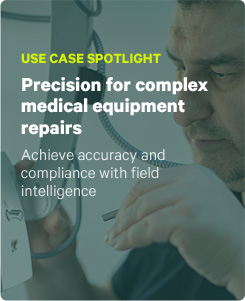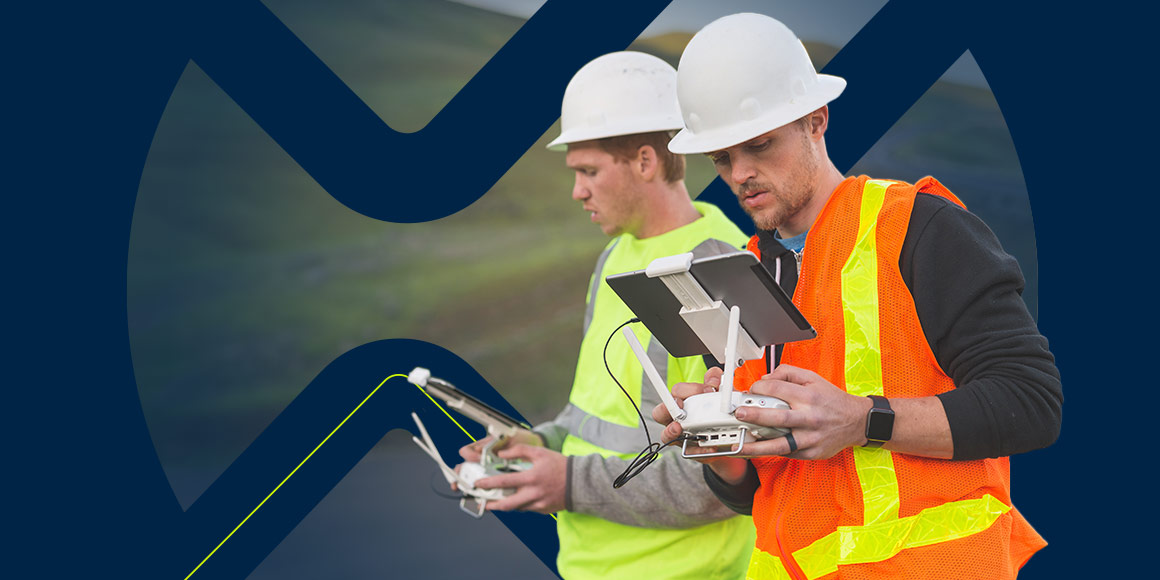At a glance:
- Critical safety concerns: The oil and gas industry faces significantly higher occupational hazard rates compared to the national average.
- The talent challenge: The industry struggles to attract new workers due to safety concerns and a retiring workforce, creating a talent shortage.
- Technology as solution: Innovative technologies like drones, wearables, and AI can enhance safety, making oil and gas careers more appealing while improving operational efficiency.
With an occupational hazard rate five times the US average, the industry needs novel ways to counter worker exodus
In the oil and gas sector, known for its operational challenges, maintaining health and safety compliance is more than a guideline; it is an essential mandate for every service leader. This necessity is underscored by the National Institute for Occupational Safety and Health (NIOSH)’s data. Their findings highlight the sector’s unique risks, as they report a yearly occupational fatality rate of 15.6 per 100,000 workers in the industry –nearly five times higher than the U.S. average.
Here, we find Laura, a seasoned HR Manager at a leading gas extraction company. Her role goes far beyond the realm of traditional talent management. Despite not being directly responsible for health and safety, she is keenly aware of hazards like flammable gas ignition, hydrocarbon vapor exposure, and high-pressure equipment failures. Laura also plays a vital role in her organization’s environmental initiatives, helping develop strategies to ensure public safety.
Laura’s workplace recently launched an ambitious initiative to open a new extraction site that integrates drones, wearables, AI, and emergency response systems. Although these have been individually tested and proven in different locations, their combined implementation is a pioneering step forward. She’s been tasked with finding experienced and innovative workers familiar with advanced extraction equipment who can adapt to a high-risk, complex environment.
Navigating talent acquisition & risk management
Laura’s critical challenge in this area is an industry-wide talent shortage, primarily resulting from the ‘great crew change’ – seasoned professionals retiring without a proper inflow of new talent. According to a recent study, although Gen Z and Millennials will make up 72% of the world’s workforce by 2029, 62% of those surveyed stated that they found a career in the industry unappealing. This gap is more than a numbers issue; it means lost experience and knowledge when the industry needs it most.
Laura seeks to hire those skilled in technologies that enhance safety and sustainability, with a deep understanding of the risks of the oil and gas industry. This approach, which balances technical know-how and risk awareness, is central to her strategy. Her efforts are part of a broader push to redefine the oil and gas sector as a field of innovative and sustainable opportunities. By aligning the industry’s evolving needs with the aspirations of potential candidates, Laura aims to position her company and sector as an attractive career choice for a new generation of field service professionals.
Innovating for safety in oil and gas operations
Leveraging her HR expertise, Laura starts her mission to staff the new extraction site with a balanced field team. She begins with experienced oil and gas technicians and operators essential for extraction and maintaining smooth operations. She also looks for specialists who align with her company’s advanced technologies:
- Drone operators and analysts: Those specializing in drone piloting, spatial awareness, and data interpretation are crucial for safer and more efficient site inspections. Their work directly impacts operational safety and efficiency, making them vital.
- Health and safety wearables specialists: Those responsible for integrating wearable technology ensure real-time monitoring of worker health and environmental conditions. Skills in wearable tech, data analysis, and rapid response to health and safety alerts are essential.
- Data scientists/AI analysts: Professionals who work closely with field technicians to analyze data from AI-driven systems. Their insights inform predictive maintenance and risk management, which helps technicians and operators make timely decisions on-site. To be successful in this role, proficiency in data science, AI analytics, and predictive modeling is required.
- Emergency response coordinators: These coordinators work with operators to manage automated emergency response systems, ensuring rapid and effective responses to incidents by utilizing emergency protocols, computerized systems, and crisis management.
Laura realizes that to progress, her new team will need proper support. She collaborates with an Operational Technology (OT) specialist to find a modern field intelligence platform provider. This partnership is crucial for true data integration across an oil & gas operation. The provider also has a mobile app built on an offline-first architecture, which will go a long way in facilitating data flow and real-time decision-making, given the site’s environmental condition.
Redefining safety and innovation in oil & gas
Laura prepares her pre-launch messaging to showcase her company’s innovative approach, emphasizing a secure workplace achieved through great people and cutting-edge technology. This forward-thinking approach enhances the company’s reputation as a safety-first and tech-forward employer and attracts top-tier talent eager to work in a technologically advanced environment.
Laura quickly notices the positive impact as the new extraction site became operational. Her team embraces the technology and the advanced data that it generates. This approach markedly reduces technician on-site time, lowering the risk of bodily injury. Technicians appreciate that leadership is constantly finding ways to improve their working conditions.
Laura’s approach gradually grows a reputation for her company as a pioneer in oil and gas, helping it attract and retain top talent as the industry faces an opposite trend.
Elevating Industry Standards through Safety and Innovation
The success of Laura’s new extraction site demonstrates the positive impact advanced technology can have on worker safety. For her, this approach has not only resulted in increased operational efficiency but also boosted her company’s ability to attract and retain the new guard of field service. With the insights generated by drones, AI analytics, and wearables, Laura’s company can attract a new generation of professionals comfortable using technology to work smarter and safer. This success story highlights the importance of a proactive approach to worker safety and encourages other organizations to adopt similar technological solutions to enhance safety, efficiency, and employee satisfaction.
If you’re interested in exploring how integration can benefit your business, please contact our sales team today.




